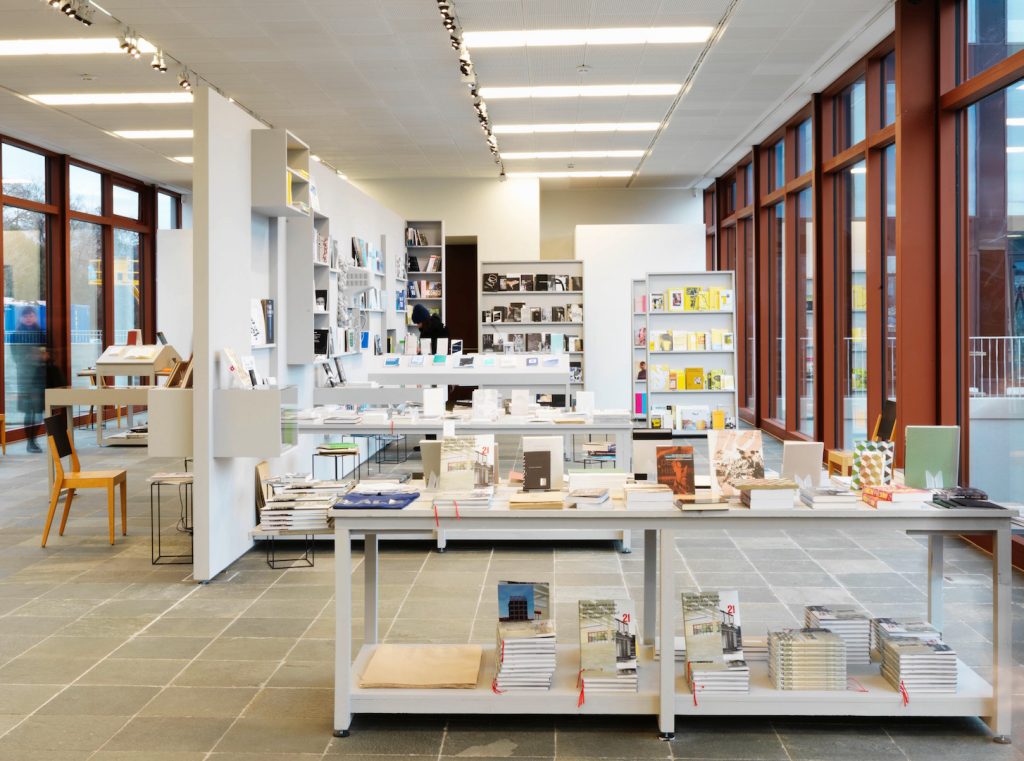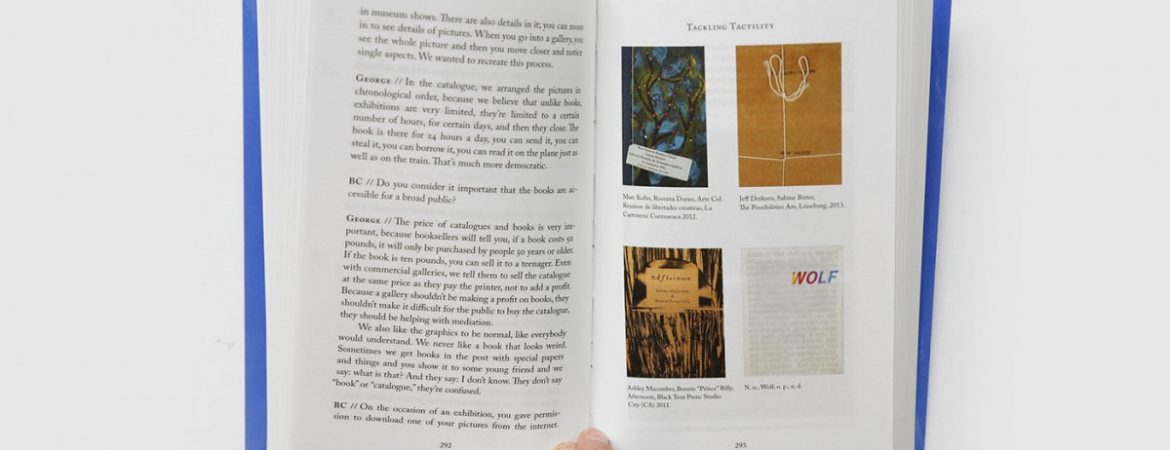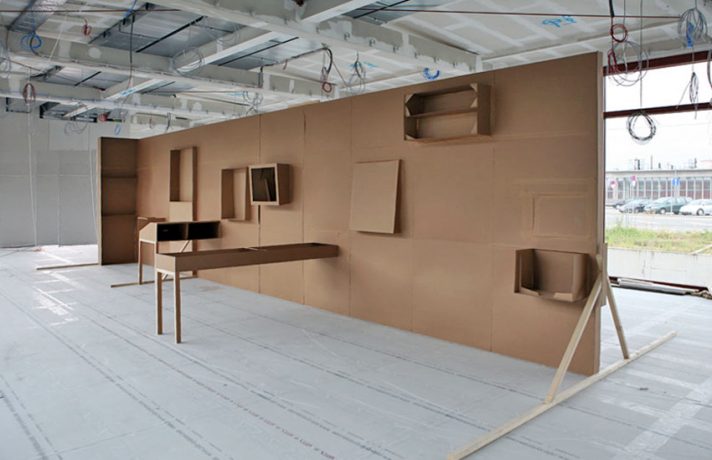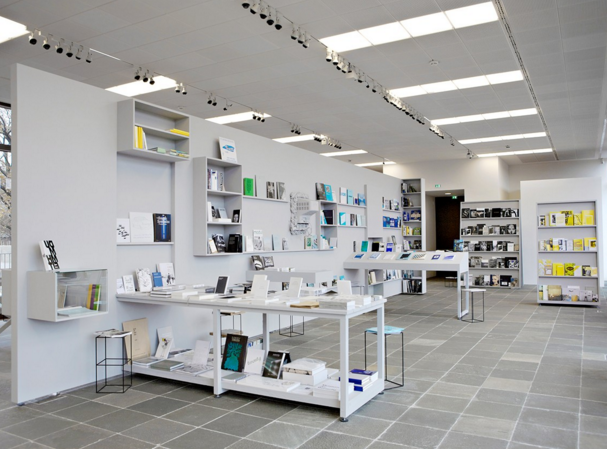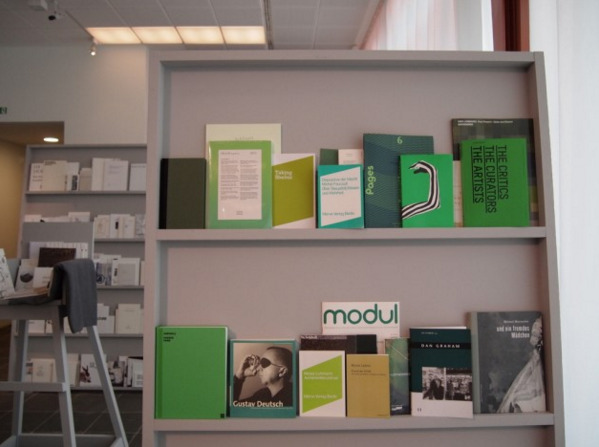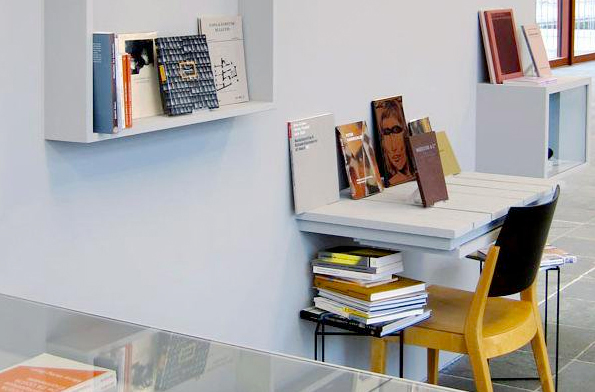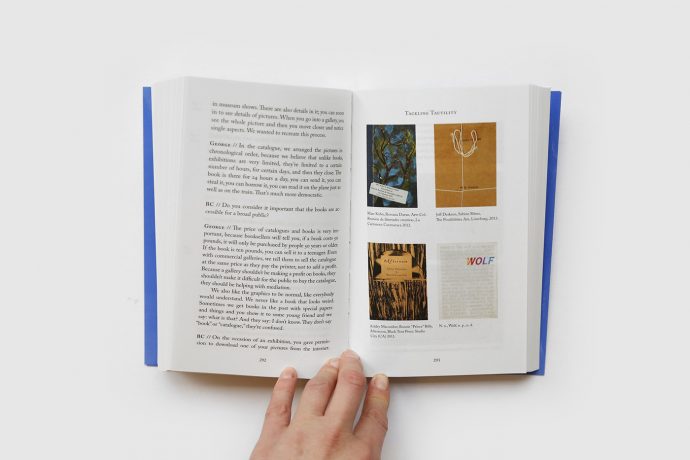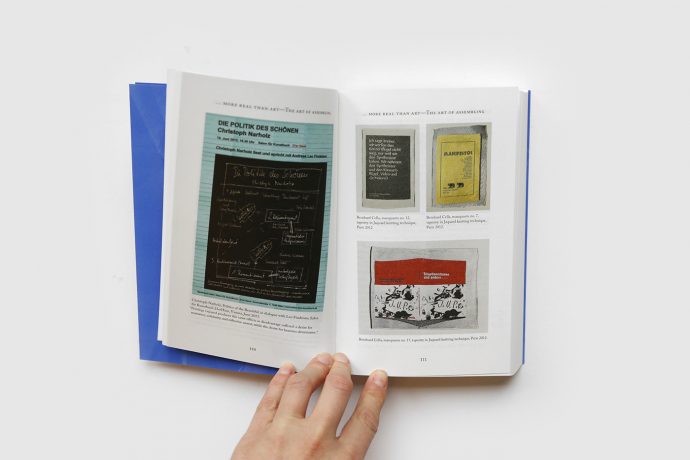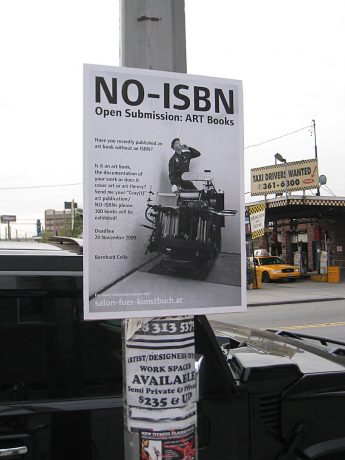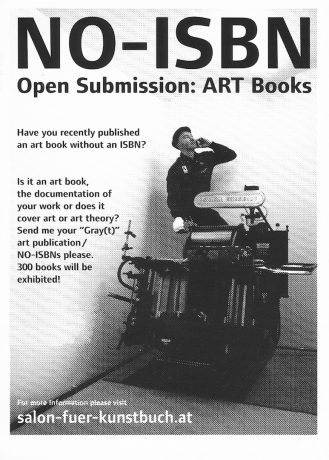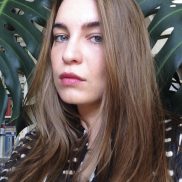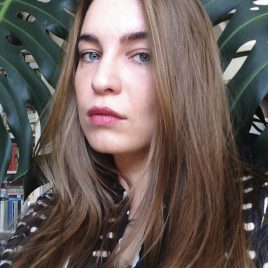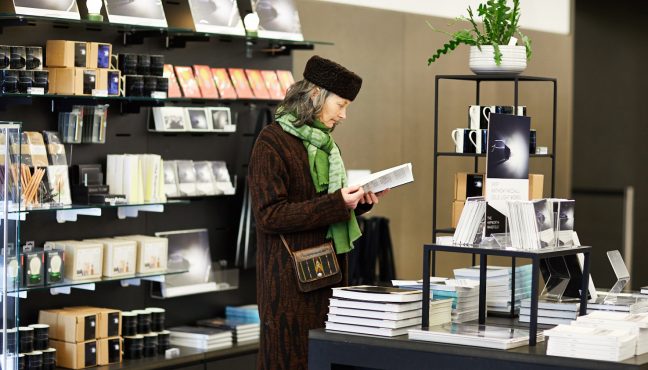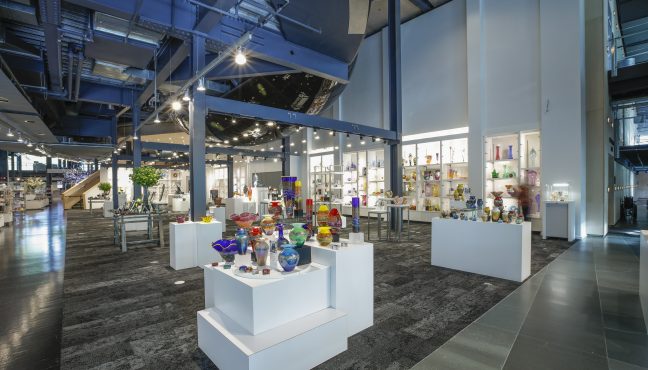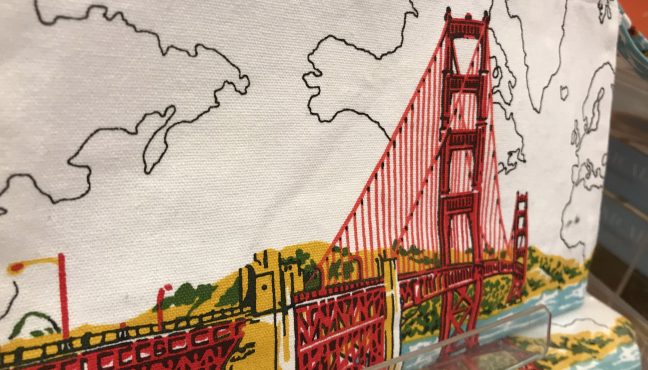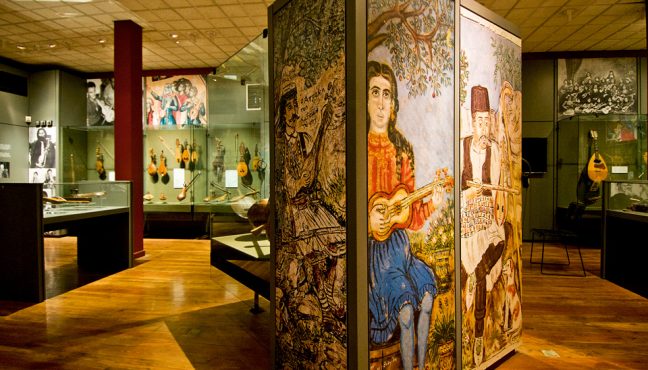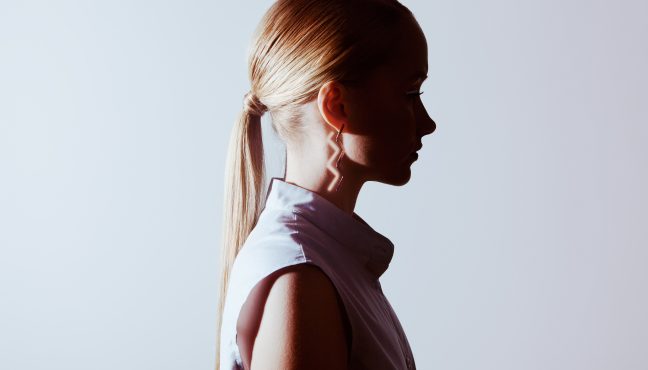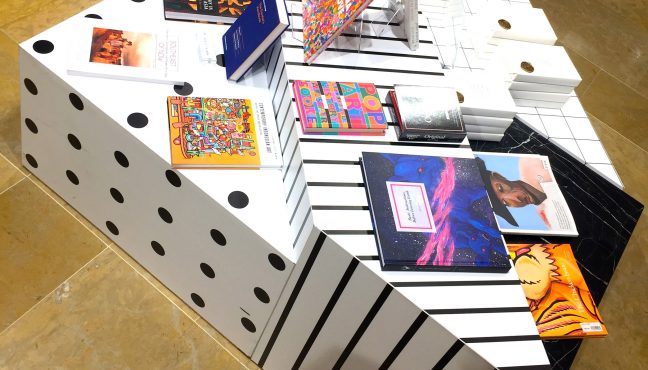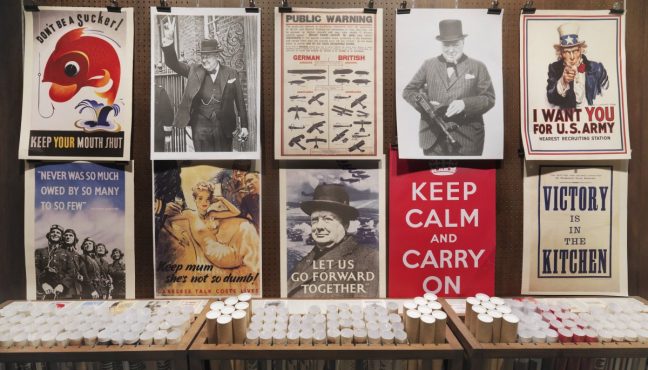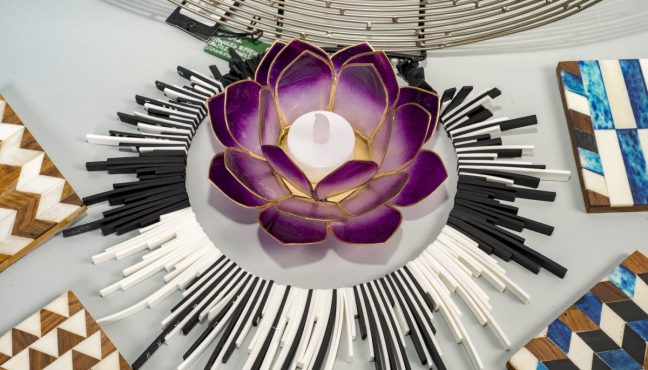Bernhard Cella is a fine artist, sculptor and conceptual artist interested in the economic and sculptural framework in which artist's books – highly informed objects in themselves – can be used as an artistic material. To this end, he conceptualized the Salon für Kunstbuch, a life-size model of a bookshop, in his studio and later on in the 21erHaus, a museum for contemporary art in Vienna. The books enter into unfamiliar vicinities and dialogues, buying and selling them becomes part of an original artistic practice.
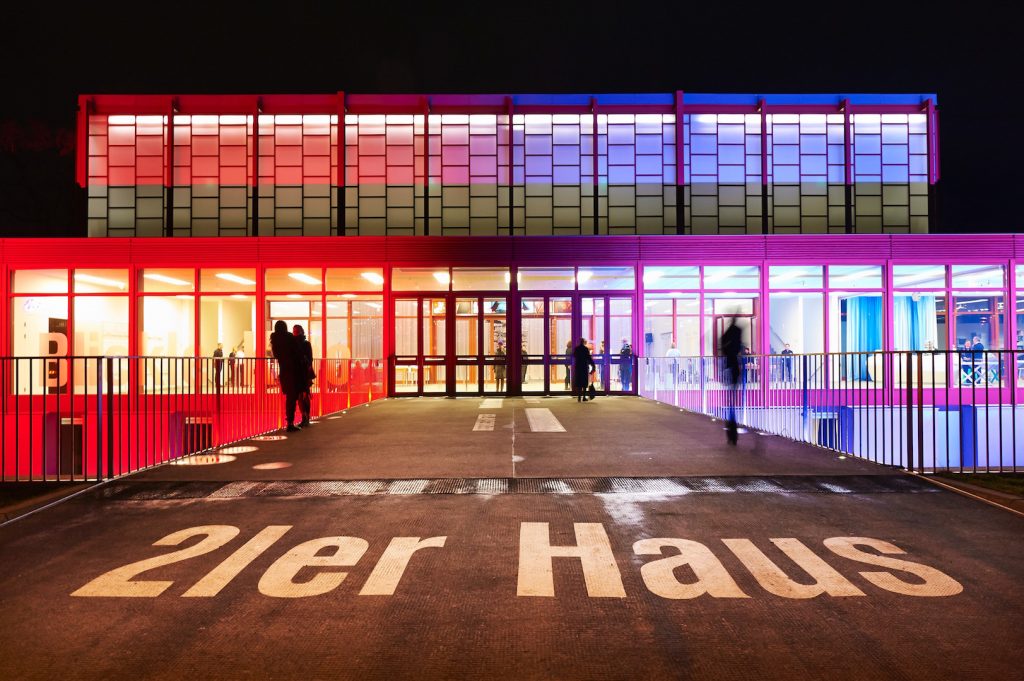
As a fine artist who is intensely involved with the book as an analog medium, you are engaging with books as an artistic material: collecting over 14,000 recent publications, curating, exhibiting, or copying books, and even producing your own. In your model spaces called Salon für Kunstbuch, as well as in the exhibitions and performances, the books are constantly set in new juxtapositions. In this way, a new kind of knowledge space has also emerged. To start, can you describe how you became interested in books as artistic material? When did you become involved in working with books for the first time??
I have always been interested in the peculiar agency of publishing and in the books themselves, because for me they proved to be the best way to contain and transfer ideas. I think it is still the best and the cheapest solution to sustain the knowledge of artistic practices in cultural memory. Because once you finished a performance or site-specific project, the remnants have vanished most of the time. Thus, an easy way towards a durable documentation does exist. By definition, everything that you plan to use later on is a documentation.
And how would you explain your own artistic practice to an outsider?
It is similar to a sculptor’s work, but one that is understood from a conceptual angle. In my works, there is a link to a distinct idea and very often it is site-specific and has a social framework associated with it. While working within the framework of the museum as an artist, the space as a social environment partakes in my own reflections and may become part of what I am actually working on. Most of all, I am trying to implement a certain idea into the museum which also implies to work within its structure and, as in any institution, there are a lot of rules which one has to accept and deal with, or to discuss.
How does your current involvement in the self-publishing scene relate to the process of collecting books in the model spaces of Salon für Kunstbuch?
After my studies, I was travelling for about 10 years to live and work in different countries. Then I came back and I had the idea to deal with basic questions of my artistic practice in different ways. What impressed me most was the potential for direct translation: in self-publishing, people act without filters. In some of the works, the artist’s affects and perceptions lead to an odd, deeply personal type of expression, so they are also a material I enjoy to work with.
I called it a ‘one-to-one-model of a bookstore.’ During the first year, however, I was dealing with the space and the objects, the ways in which you can present the publications, how to develop displays. Back in 2007, I did not have more than 60 books, today there are over 14.000 different titles.
Once you developed the Salon as a life-size model in your studio, how did it function? How did the audience react to it?
In my studio I have a lot of publications which you can’t buy any more. So my own collection and the books on sale are mixed. It looks like a shop, but it doesn’t function like a shop. Normally in retail a product has to be sold during a certain period of time, otherwise a store doesn’t make sense. What I experience through this situation, by circumventing economic rules, is that the mix of products holds a peculiar quality because decisions about what you should show are not made only based upon the idea of selling it.
And how did the concept for “NO-ISBN” emerge out of this continuous practice of collecting, assembling and presenting books?
In the first years of the Salon, I noticed that a lot of the artists’ books I had were lacking an ISBN. What defines these books is, as it were, a silent “no.” In 2009, I reacted to that with a poster performance at MoMA PS1 in New York. I simply sent out a public call for people to send me books without an ISBN to the Salon in Vienna. What really surprised me was that around 500 books arrived over the next few weeks and it made me feel like I had touched upon something. I received almost 500 publications from North America, from Brazil, Mexico, and also from Europe, mostly due to the mailing lists of contemporary self-publishing scenes. This was kind of the starting point of my collection and gradually, I was using these books as a physical material and as a background, almost like a film set.
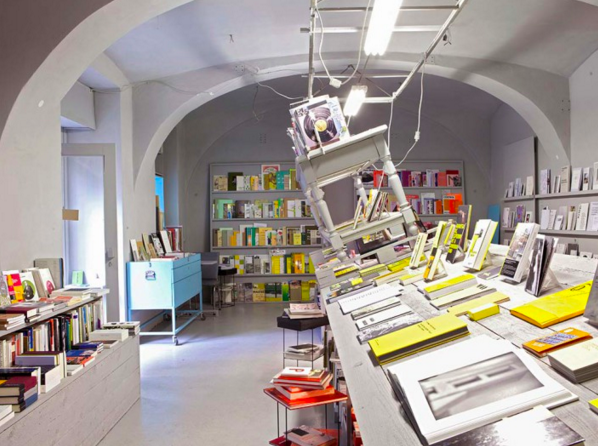
The forms of interaction at Salon für Kunstbuch are quite diverse as so many different fields like artists’ books, art books, the visual arts, architecture or performance etc. may enter into a possible conversation with each other. How did it come about that the museum invited you? And how did you adjust the studio project for the museum?
When the 21er Haus was about to open, the original Salon für Kunstbuch was already part of the local discourse and I was asked to think about a fresh approach towards the museum´s shop from my artistic position. The spatial situation, of course, is quite different, the museum has glass walls on both sides as the building´s original purpose was to function as a pavilion for the Brussels’ World exhibition in 1956. Yet I was interested to engage in something that promised a real step forward in comparison to what is normally happening in a museum and its shop.
We arrived at the idea that although the piece purchased by the museum is a process, there might come a moment when I don’t want to continue. Thus, we also had to discuss what would happen after the process comes to an end.
In the end, two arrangements made the realization possible. First, the museum purchased the material paradigm of the Salon under the title “Salon für Kunstbuch,” which is the tangible installation that visitors can now experience at 21er Haus and that had been modeled in cardboard. For the installation, I adapted the aesthetics of a film set, an abstract framework oscillating between two and three dimensions, which gives the space a basic structure for the books, objects, and events. The museum now owns this design as a work of art, which means the institution is responsible for its maintenance, just as with any other work in their collection. Due to this acquisition and contractual agreement, my original “model of a bookshop” could re-manifest as a “model of a museum shop.”
To allow for processual dynamics to take place, a second aspect was crucial: a space like this needs roughly four elements of movement: first, a process-based momentum, which guarantees its long-term use and conceptual establishment in the city—for example, through a program with regular events in the context of international art discourse. It also needs a corresponding thematic selection with regard to the choice of books. So at Salon für Kunstbuch 21er Haus, we now offer a collection of publications that provides an overview of current art and culture in Austria. This doesn’t exist anywhere else. Third, the interior design, displays, and individual art objects have to be regularly redesigned so that the space and its contents interact and move forward. Finally, there is the question of the quality of the space: we agreed that all questions concerning the conceptualization and design would be my responsibility, in cooperation with the museum. Through the purchase of the paradigm and this unique fourfold constellation, I became the curator of my own work.
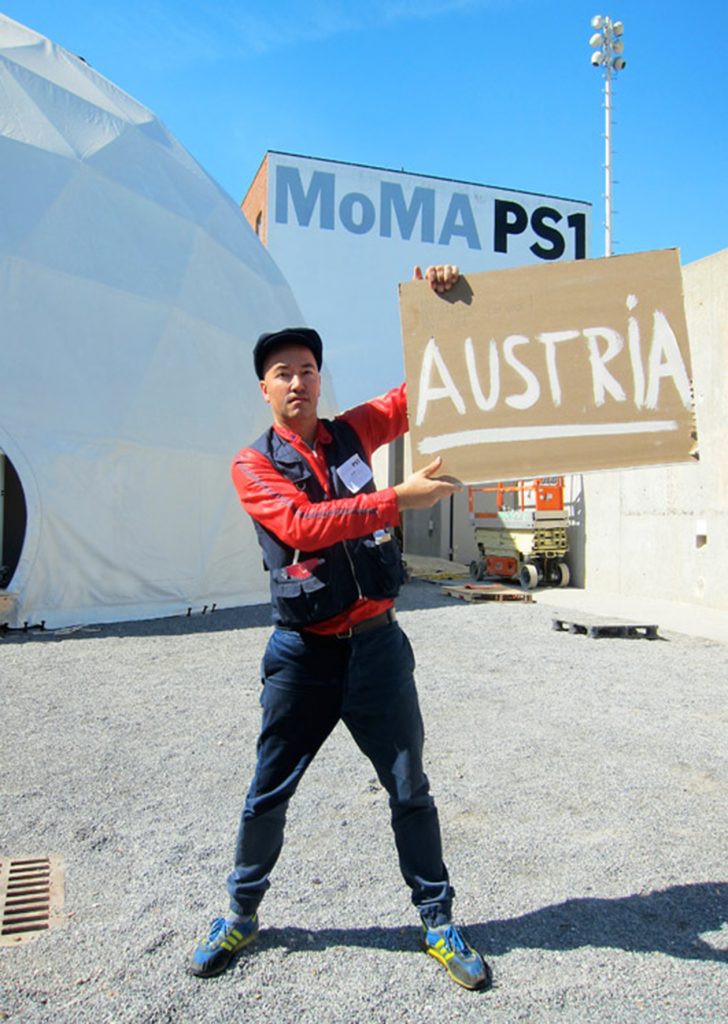
So for the 21er Haus, you have applied different criteria to build up an inventory of publications? Are they only of Austrian origin?
Unlike in my studio, I offer everything which has been produced in a specific geographic area at 21er Haus. It’s not about nationality, it’s about publications that were produced locally. Also, the 21er Haus is collecting contemporary art with a strong focus on Austria. The territory of our country has a strange shape, like a shoe, and when you travel from one end to the other, it is 1000 km and quite a journey. Many of those publications are hard to find anywhere else, because most institutions don’t have a real distribution and don’t usually have catalogues from other institutions on display. So I thought it might be interesting to collect those books from the art field and juxtapose them with theoretical works. All of this partial collection is on sale, and it’s updated all the time.
The museum presents the ‘Salon’ as the ‘first museum shop worldwide run as an artistic intervention.’ How does the audience react when they realize that the shop is an art project in itself? And how do economic aspects play out in the ‘model of a museum shop’?
Firstly, it does not happen very often that a space like this opens to be used for artistic interests rather than for commercial ones. Traditionally, the art world always tried to keep away from everything which has to do with commercial value, a clean white cube is preferred to present a piece, we all know this. But for me, this is just another way to go beyond the traditional way of presentation. Of course, a shop in a museum is also part of a financial system, if it is visited as a work of art there is some irritation that it has a function and sales are happening. I also received a lot of critique, especially from other artists, about the fact that people can buy something. Yet by purchasing something, the visitors can also become part of it and some of them realize that there is hardly any distance between them and the artwork anymore. In general, contemporary museums have a problem with museum shops, most of them don’t really work, and for diverse reasons. On this topic, we are soon going to publish a book titled “What is the museum shop in the 21st century?”.
As a last question, what is the idea behind arranging the books according to their color?
The color-coding was born after the book collection exceeded one thousand items, and after I started to experiment with their potential as artistic material. When people enter the space, they usually start out by taking certain topics as their criteria for what they search for: photography, media art, sculpture, art theory, women studies, etc. Looking at the material I collected, I became interested in findings that don´t occur by only conducting your search on topics. With the “Anarchives”, I started to focus on the visual appearance of books. Especially concerning the artists’ books, their quality lies in being unique, self-contained objects. Just have a look at the online platform salon-fuer-kunstbuch.at, where you can see how artists make use of color. Many of them are not even connected to a publishing house, which implies that their production has been independent from a certain theoretical, artistic, or institutional school of discourse. This way, one may encounter a multitude of approaches to book design. On the other hand it was hard for some people to find what they were looking for. Most books were made by artists, and most of the time a refined connection between the visual expression on its cover and its actual content can be observed. This is another reason why I thought it would make sense to bring them together. Last but not least, I also like the aesthetic challenge of creating a common surface, a shared semiotic fundament for the books.
Bernhard Cella lives and works in Vienna. He is the initiator of the Salon für Kunstbuch and research on NO- ISBN. Bernhard has exhibited and performed internationally, and authored numerous artist books. Bernhard Cella studied at the Academy of Fine Arts Vienna and at the University of Fine Arts in Hamburg.
For more information: * NO-ISBN - On Self-publishing, B. Cella, L. Findeisen, A Blaha (eds.), Cologne 2015; p. 81ff. ; B. Cella, NO-ISBN, in: Publishing as Artistic Practice, A. Gilbert (Ed.), Berlin 2016, pp. 138 ff.
